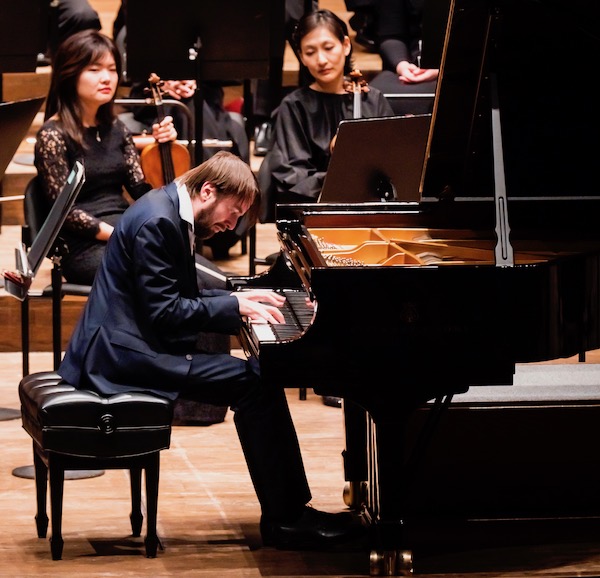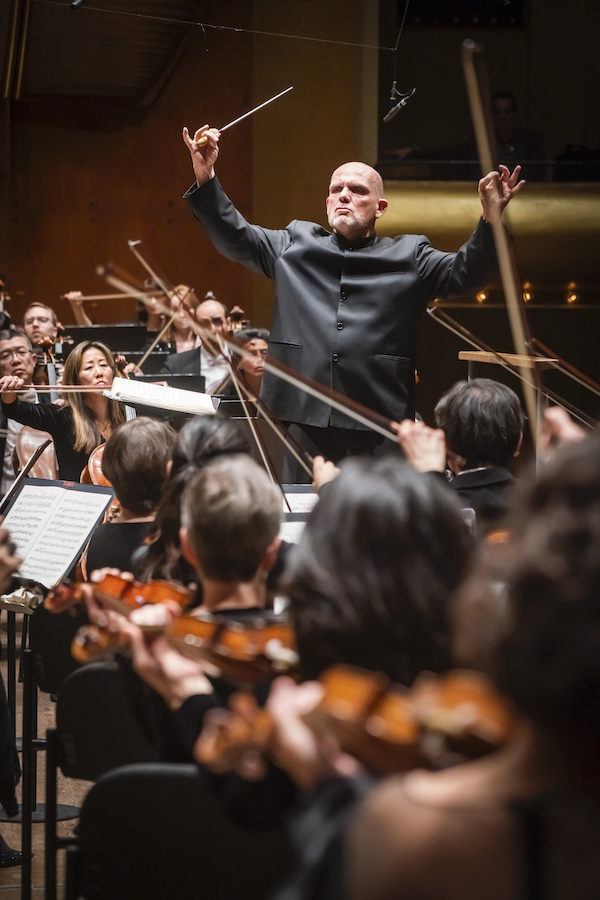A mixed night of Russian music from van Zweden, Trifonov and the Philharmonic

For performers, a piece the audience doesn’t know presents one set of challenges, and a familiar piece quite a different set. It is the difference between a first date and a night out after twenty years of marriage. It is “Can we make it interesting?” versus “Can we keep it interesting?”
The New York Philharmonic under Jaap van Zweden performed one of each kind of piece Wednesday night, both composed in Russia during the late Romantic period. The results were mixed in both cases.
Alexander Scriabin’s volatile and über-Romantic Piano Concerto has been a specialty of Russian pianists, whose recordings have earned the piece a small but devoted following. But it’s likely that more people in David Geffen Hall on Wednesday had been attracted by the presence of the pianist of the hour, Daniil Trifonov, than by the little-known piece he was playing.
Among his later symphonies, Tchaikovsky himself spoke highly of his Fourth and Sixth and tended to disparage his Fifth. Nevertheless, resident and visiting orchestras seem to be giving New York a steady diet of the Fifth in recent seasons, to the neglect of its siblings. Wednesday’s concert continued the trend with yet another traversal of this familiar work.
Neither piece “plays itself,” but Tchaikovsky’s melting melodies and mighty crescendos virtually guarantee some kind of dramatic effect, while Scriabin’s hopscotching from idea to idea in the concerto, his first piece for orchestra, takes superior artistry to make sense of.
What Scriabin had going for him was a highly refined ear for piano tone and textures, and a pretty good rookie sense of how orchestral instruments interact with each other and with a piano soloist. Bringing out these virtues is one key to making his concerto “sound.”
The other is somehow finding the long-term expressive direction in music that, for whatever reason—the composer’s distractibility, inexperience with long musical forms, or infatuation with Wagner—often seems choppy and irresolute, especially in the concerto’s relatively brief first movement.
Soloist Trifonov tackled that movement’s tumble of ideas with commitment, intelligence, and the kind of technical assurance that makes one forget how hard the music is to play and just listen to what the pianist is saying with it. But one wished he had more to say about where he was taking the listener, instead of just expertly delivering Chopinesque filigree one moment and Lisztian fire the next.
But even such a charm bracelet of pretty musical thoughts can be good to listen to if the tone chemistry is there. On Wednesday, Trifonov’s rather monochromatic sound and lack of a real singing tone did not inspire much collaborative magic with Van Zweden and the orchestra. Some of the score’s piquant moments were lost to imbalances that obscured wind solos behind the strings or the piano.
The Andante, a theme and five variations that played to Scriabin’s strength as a piano miniaturist, is a more graspable composition than the first movement, and fared much better Wednesday night. From the hazy opening in muted strings to the closing sparkles high on the piano, Trifonov and his orchestral partners gave each variation its own vivid character.
In the finale, one was on familiar Russian ground, with a high-kicking main theme and a luscious lyrical theme that came back later in ecstatic fortissimo. While Scriabin’s main theme was energetic but unmemorable, the lyrical tune was a knockout, and pianist and orchestra could have let it soar even more than they did.
The pianist rewarded the warm applause with an encore, Scriabin’s Etude in C-sharp minor, Op. 42, No. 5, an exhilarating and passionate blizzard of notes.

The first movement of Tchaikovsky’s Fifth had continuity problems of its own, not from any gaucheries by the composer, but from conductor Van Zweden’s exaggerated tempo swings and strange sound balances (the opening clarinet solo was almost inaudible), apparently in an effort to “keep it interesting.”
More novelty-seeking seemed to mar the horn’s theme in the Andante cantabile, which was so oddly inflected that it sounded more like a distress call than a love song. Tempo steadied for the more active middle section, which crescendoed satisfyingly to a stark statement of the symphony’s “Fate” theme.
The third movement’s waltz theme sounded a little rushed and out of time, causing the players to go slightly out of sync. Again a smartly-played middle section came to the rescue, as rapid, balletic 16th notes scampered from the violins through the other sections, strictly in time, to delightful effect.
Van Zweden took the Allegro vivace finale at an exceptionally fast clip, bordering on presto. If this bullet train shot past some interesting details of Tchaikovsky’s landscape, there was no denying the excitement it generated, or the way it spruced up the orchestra’s ensemble after some sloppiness in the previous movements. A colorful development section and dramatic coda topped off the wild ride.
The program will be repeated 8 p.m. Friday and Saturday and 7:30 p.m. Tuesday. nyphil.org; 212-875-5656.